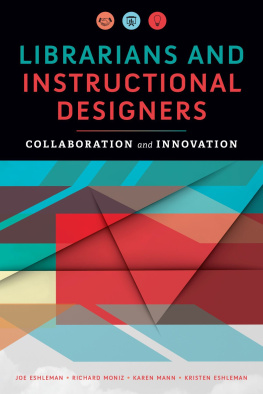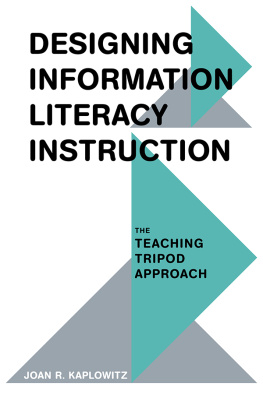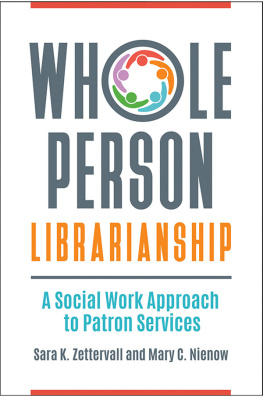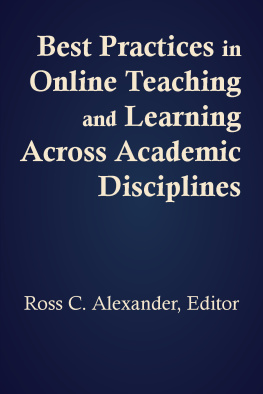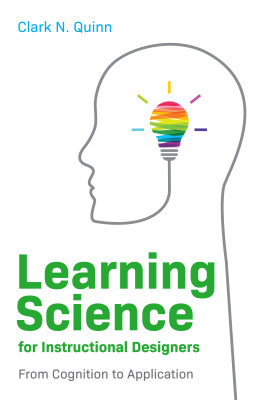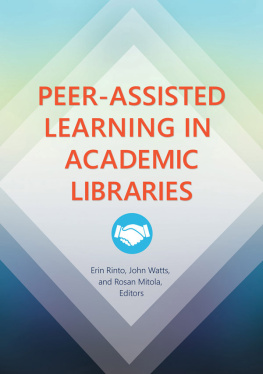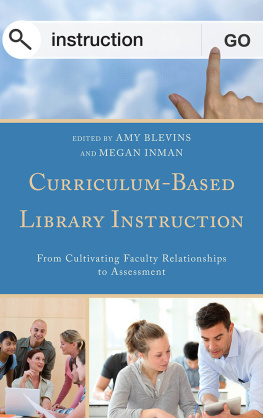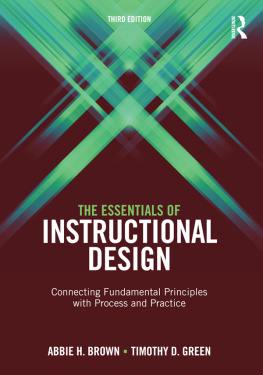Joe Eshleman - Librarians and Instructional Designers: Collaboration and Innovation
Here you can read online Joe Eshleman - Librarians and Instructional Designers: Collaboration and Innovation full text of the book (entire story) in english for free. Download pdf and epub, get meaning, cover and reviews about this ebook. year: 2016, publisher: American Library Association, genre: Romance novel. Description of the work, (preface) as well as reviews are available. Best literature library LitArk.com created for fans of good reading and offers a wide selection of genres:
Romance novel
Science fiction
Adventure
Detective
Science
History
Home and family
Prose
Art
Politics
Computer
Non-fiction
Religion
Business
Children
Humor
Choose a favorite category and find really read worthwhile books. Enjoy immersion in the world of imagination, feel the emotions of the characters or learn something new for yourself, make an fascinating discovery.
- Book:Librarians and Instructional Designers: Collaboration and Innovation
- Author:
- Publisher:American Library Association
- Genre:
- Year:2016
- Rating:4 / 5
- Favourites:Add to favourites
- Your mark:
- 80
- 1
- 2
- 3
- 4
- 5
Librarians and Instructional Designers: Collaboration and Innovation: summary, description and annotation
We offer to read an annotation, description, summary or preface (depends on what the author of the book "Librarians and Instructional Designers: Collaboration and Innovation" wrote himself). If you haven't found the necessary information about the book — write in the comments, we will try to find it.
Joe Eshleman: author's other books
Who wrote Librarians and Instructional Designers: Collaboration and Innovation? Find out the surname, the name of the author of the book and a list of all author's works by series.
Librarians and Instructional Designers: Collaboration and Innovation — read online for free the complete book (whole text) full work
Below is the text of the book, divided by pages. System saving the place of the last page read, allows you to conveniently read the book "Librarians and Instructional Designers: Collaboration and Innovation" online for free, without having to search again every time where you left off. Put a bookmark, and you can go to the page where you finished reading at any time.
Font size:
Interval:
Bookmark:
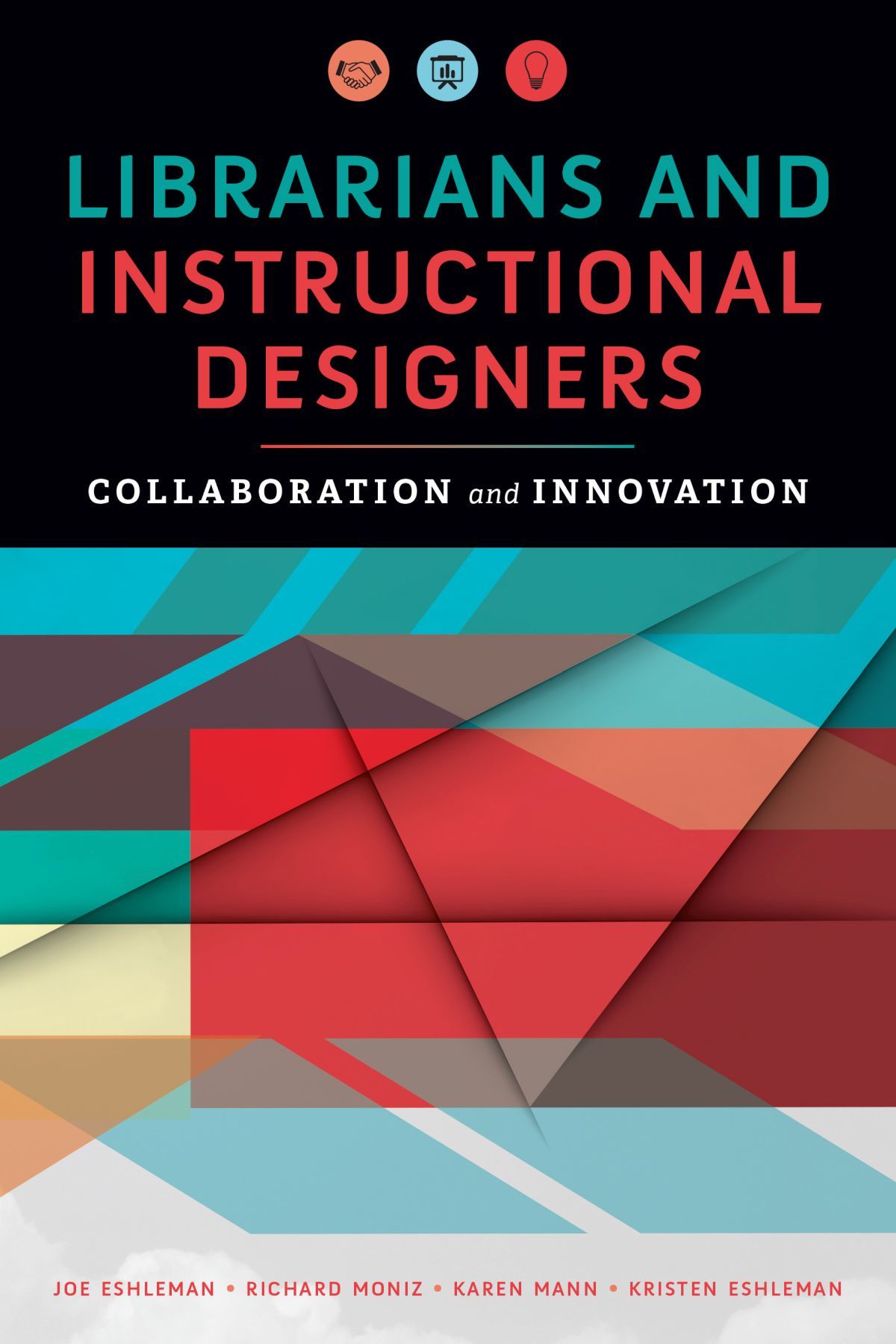
ALA Editions purchases fund advocacy, awareness, and accreditation programs for library professionals worldwide.
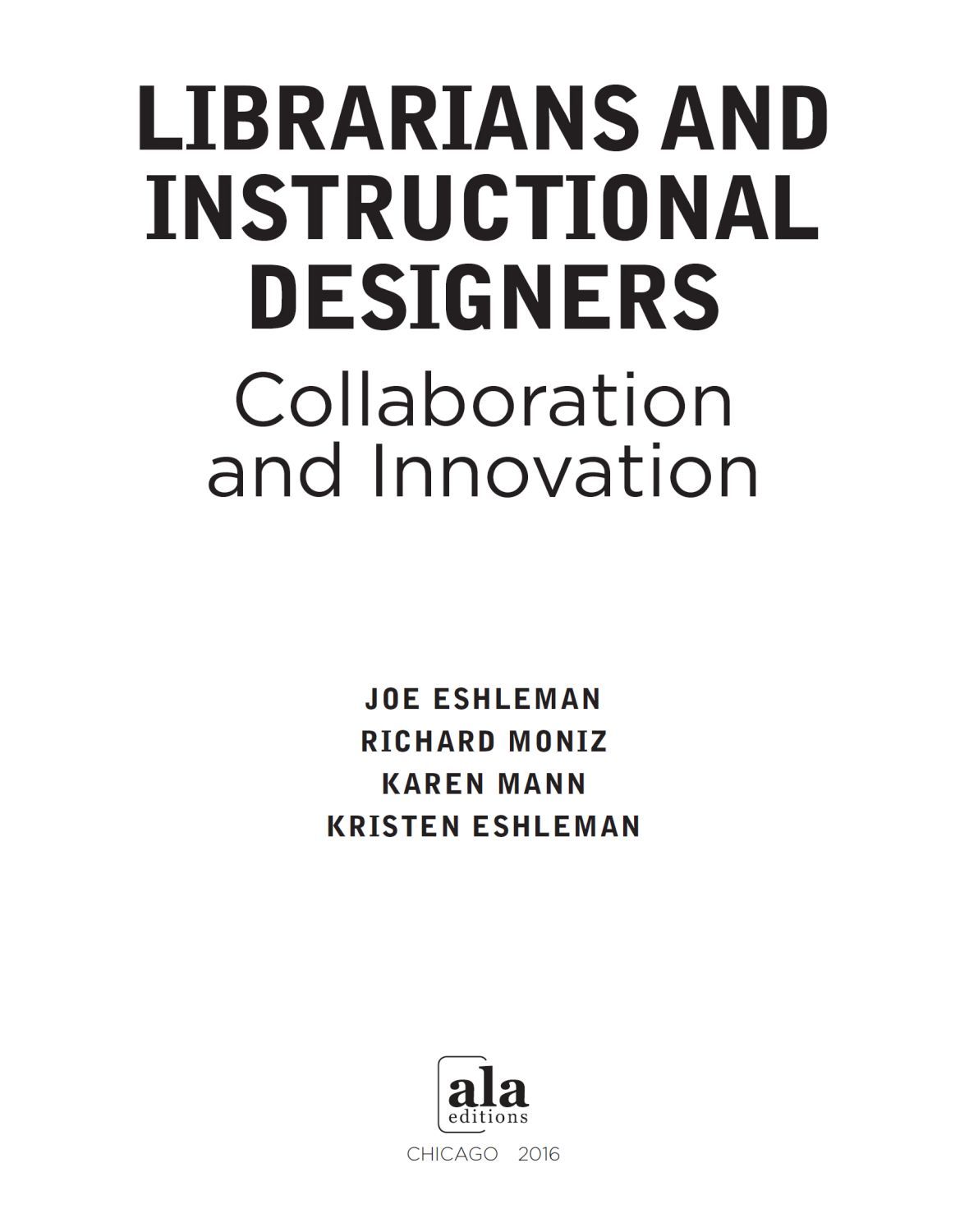
2016 by the American Library Association
Extensive effort has gone into ensuring the reliability of the information in this book; however, the publisher makes no warranty, express or implied, with respect to the material contained herein.
ISBNs
978-0-8389-1455-7 (paper)
978-0-8389-1478-6 (PDF)
978-0-8389-1479-3 (ePub)
978-0-8389-1480-9 (Kindle)
Library of Congress Cataloging-in-Publication Data
Names: Eshleman, Joe, author. | Moniz, Richard, author. | Mann, Karen, 1971- author. |
Eshleman, Kristen, author.
Title: Librarians and instructional designers : collaboration and innovation / Joe Eshleman,
Richard Moniz, Karen Mann, Kristen Eshleman.
Description: Chicago : ALA Editions, an imprint of the American Library Association, 2016. |
Includes bibliographical references and .
Identifiers: LCCN 2016014823| ISBN 9780838914557 (print : alk. paper) | ISBN 9780838914793
(epub) | ISBN 9780838914786 (PDF) | ISBN 9780838914809 (Kindle)
Subjects: LCSH: Academic librariesRelations with faculty and curriculum. | Academic
librariansEffect of technological innovations on. | Academic librariansProfessional
relationships. | Instructional systemsDesign. | Education, HigherEffect of
technological innovations on.
Classification: LCC Z675.U5 E77 2016 | DDC 027.7dc23 LC record available at https://lccn.
loc.gov/2016014823
Cover design by Alejandra Diaz. Imagery Shutterstock, Inc.
Joe Eshleman and Kristen Eshleman
Richard Moniz
Richard Moniz
Joe Eshleman
Joe Eshleman
Joe Eshleman and Kristen Eshleman
Karen Mann
Karen Mann
Joe Eshleman
W e would like to thank the following who were instrumental in helping us complete this book: George Siemens, Joshua Kim, Allison Dulin Salisbury, Suzanne Churchill, Mark Sample, Jennifer Hunter, Karen Tercho, and Amy Knauer. We would like to offer a special thanks to Jamie Santoro, our editor at the American Library Association, who believed in our project from the beginning and encouraged us every step of the way.
L earning in the digital age is a networked and participatory process. Therefore, supporting faculty members and students ability to master digital methods and tools increasingly requires thoughtful partnerships between librarians and instructional designers. As technology continues to influence the direction of higher education, each of these fields faces both challenges and opportunities. Those individuals who are able to keep up with the consistent change are at an advantage. More importantly, those who are open to collaborative opportunities become more valuable to their institutions as they build networks of relationships and shared skill sets. Due to the increased importance and influence of digital technologies and the move toward design thinking as a way to offer strategies and solutions, it is time for librarians and instructional designers to team up to show their value to their institutions.
It is the combined interest in design along with a deep understanding of information creation and use with a focus on technology that is so important here. The intent is not to develop a magic bullet that somehow solves all of the woes of higher education. It is instead the desire to bring together human resources with unique and helpful knowledge (and skill sets). They can become valuable assets in the move to the newer technology-driven types of teaching and learning that current and future students need. Note that although technology continues to influence education, our focus here is on the people (librarians, instructional designers, students) and the collaborative opportunities available to them. While awareness and understanding of how to use the tools offered by todays technology are of utmost importance, they do not supersede the need for relationship building.
Certain day-to-day realities, as we all know, have the potential to make good intentions fall by the wayside. How can I begin working with a librarian or an instructional designer when that is not part of my job? In some cases, the position of instructional designer may not even exist in a given workplace. Yes, this is a good idea, but what does it look like in reality on my campus? These are good questions to ask as we search for creative but practical solutions. Creating a concrete plan for moving from a basic project in which a designer and a librarian work together to one that involves a team that influences and impacts campus decisions is a justified goal. Hopefully, in addition to the examples we provide, this book will also generate conversations that help to add new and improved strategies to our ideas.
To be clear, this book is a combined effort between librarians and instructional designers and in some ways does more to represent the goals within it than what has actually been written. Furthermore, within our own various institutions, we continue to work toward its loftier goals. That is to say that although we work in tandem with our own instructional designers and librarians (as the case may be), we have not yet been able to achieve the kind of interest or influence on our own campuses for which we strive. As a type of enthusiastic exhortation rather than an extensive review or an exhaustive reference, this book is meant to inspire librarians and instructional designers to get to know one another and then to work collaboratively. The group foundation of this effort (two librarians and two instructional designers/technologists) supports this notion. The main goal is to spark ideas for collaboration among those who have not yet done so and to open up avenues of opportunity for those who cannot find them in their environments.
Once more, in the implementation of these ideas, another common question is likely to arise: How does a concrete collaborative relationship between librarians and instructional designers that influences administration on my campus work and what form would it take? While we provide numerous examples of what has already been done, we also put forth theories and conjecture to encourage creative solutions on the part of readers. The goal at this point is not to give that question one distinct answer but, rather, to inspire more people to ask the question and to come up with answers that make sense for them and their institutions.
A renewed focus on the building of academic networks that can create strong bonds on campus needs to be discussed to improve higher educations capability to move forward. As a way to think about how librarians are affected, Keith Webster, in a recent presentation titled Leading the Library of the Future: W(h)ither Technical Services?, points out:
We operate in a networked worldlocal collections in themselves make learning and research incomplete.
We should no longer focus on acquiring the products of scholarship; we must be embedded within scholarship.
New methods of researchopen science, digital humanities, etc.reshape researchers needs and demands.
How do we get there?
One way to get there is to change the way we think about what librarians do and how our institutions think about librarians. We must also come to the realization that we cannot get there alone. Looking for those on campus to work with has frequently led us to view faculty as good partners, and this has provided for many fruitful collaborations. Still, such relationships have not created the elevated reputation or integration for librarians that we desire. We have much to offer our institutions that remains hidden below the surface. Although many partnerships with teaching faculty work well, there may be even more opportunities and situations in which librarians and instructional designers are better matched as peers. There are numerous cases where librarians and instructional designers have worked together in the past, yet the opportunity for more cross-pollination between these two campus roles has yet to be fully realized. This book recommends exploring those opportunities that may yield collaborations on campus. It places emphasis on making the effort to work with those in technology and design positions because these areas will continue to both impact and define higher education. Additionally, a focus on design allows us to reinvent roles and helps us to be prepared when considering ourselves as campus leaders.
Font size:
Interval:
Bookmark:
Similar books «Librarians and Instructional Designers: Collaboration and Innovation»
Look at similar books to Librarians and Instructional Designers: Collaboration and Innovation. We have selected literature similar in name and meaning in the hope of providing readers with more options to find new, interesting, not yet read works.
Discussion, reviews of the book Librarians and Instructional Designers: Collaboration and Innovation and just readers' own opinions. Leave your comments, write what you think about the work, its meaning or the main characters. Specify what exactly you liked and what you didn't like, and why you think so.

